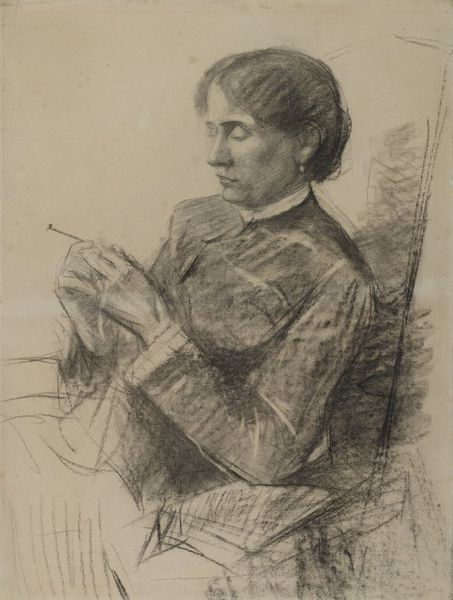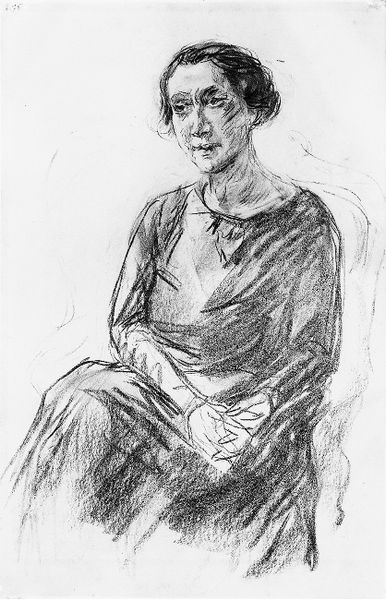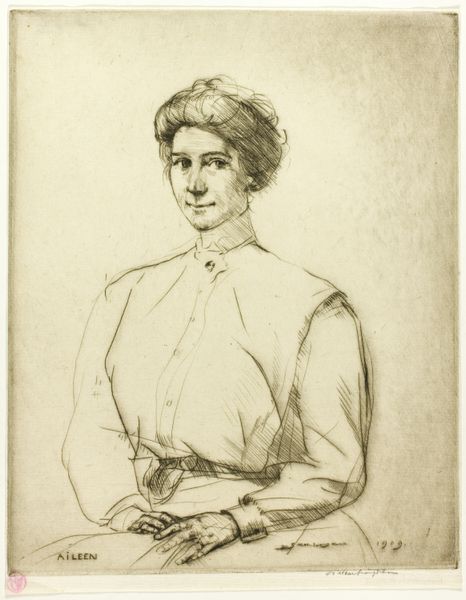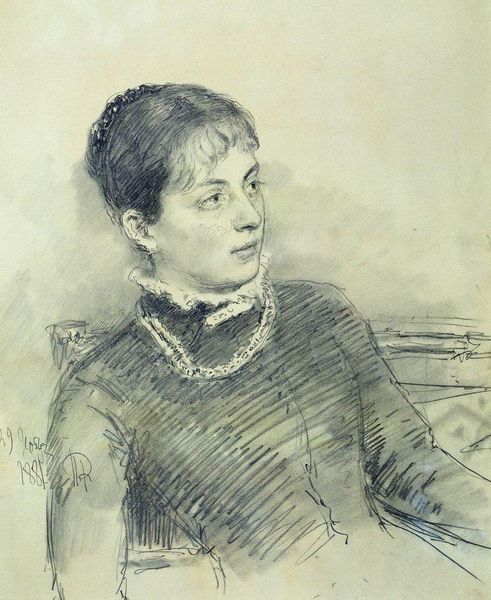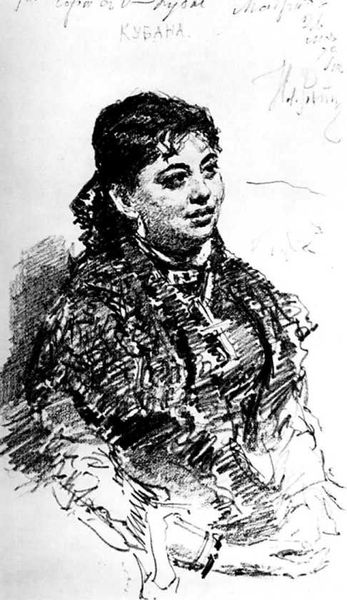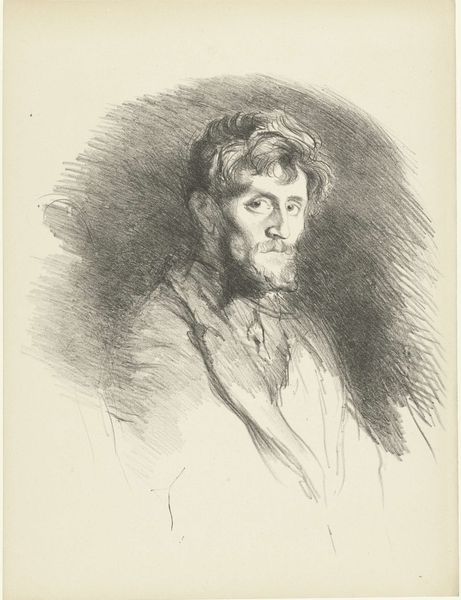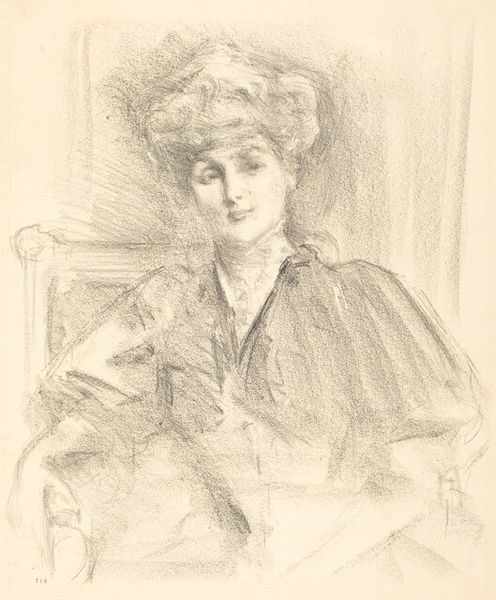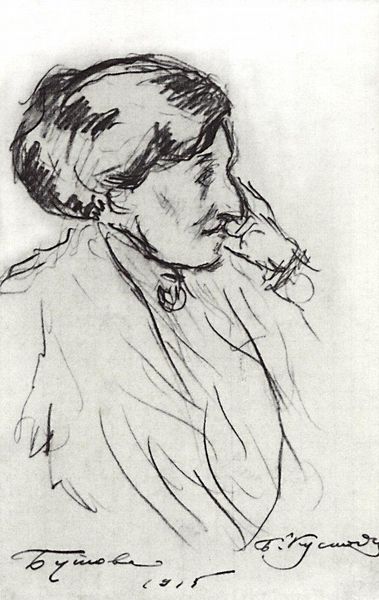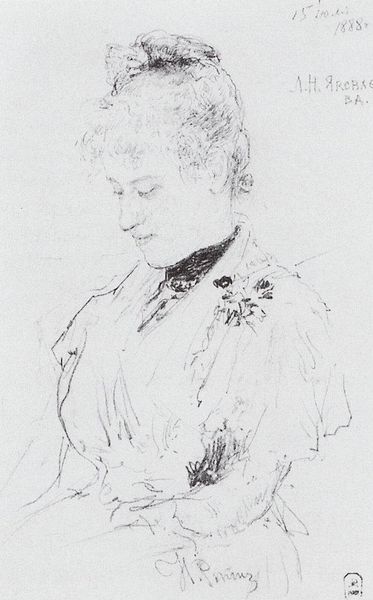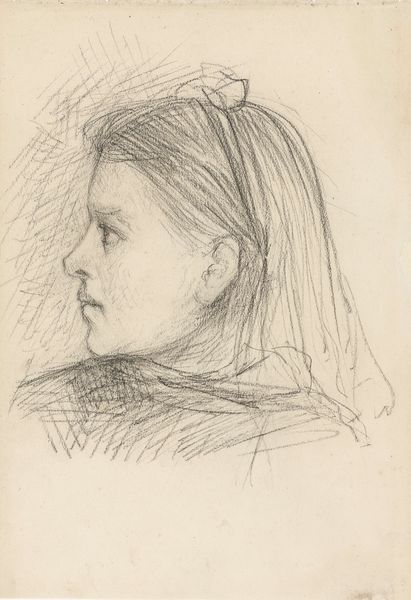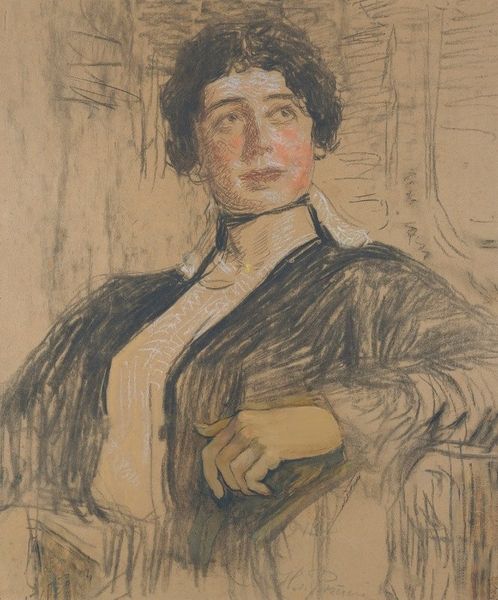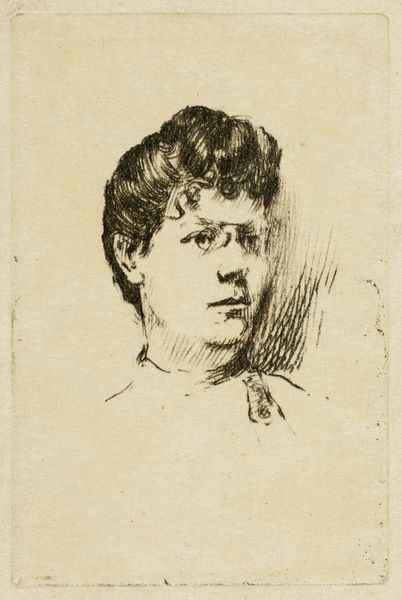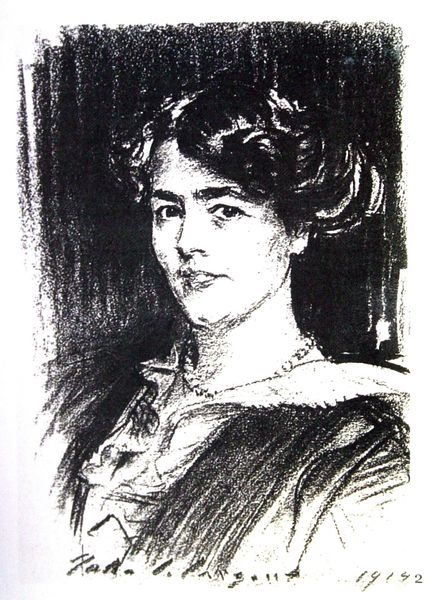
drawing, pencil
#
portrait
#
drawing
#
comic strip sketch
#
facial expression drawing
#
self-portrait
#
pencil sketch
#
portrait reference
#
idea generation sketch
#
sketchwork
#
sketch
#
pencil
#
human
#
nose
#
portrait drawing
#
facial study
#
facial portrait
#
realism
#
initial sketch
Copyright: Public domain
Editor: So, this is "Portrait of Luise Haidheim," a pencil drawing from 1893 by Christian Wilhelm Allers. I find it very intriguing – almost like a snapshot capturing a writer in the middle of their creative process, you can see drafts. What grabs you when you look at it? Curator: You know, it whispers of a life lived within ink and paper. I imagine Allers catching her between thoughts, mid-sentence, really, that intense focus so familiar to anyone wrestling with words. Those fleeting pencil strokes, see them dance? They're not just sketching a likeness, but almost catching the very fleeting spirit of creativity itself. You see how she holds the pen… like a weapon? She's facing down a blank page, armed with only wit and skill, ha! Doesn’t it feel incredibly intimate to witness such a thing? Does the energy in the portrait get to you? Editor: It really does! That's a beautiful way of putting it, especially 'a life lived within ink and paper'. So it's not *just* a portrait, it's an artistic interpretation? Curator: Absolutely. He wasn't simply interested in portraying her external features; Allers sought to capture her essence as a writer, the inner fire driving her creative process. The drafts also confirm this idea. What does it suggest to you that a 'realist' portrait would adopt techniques more often found in a simple preliminary sketch? Editor: Hmmm. So the rawness isn't a failing, but adds a certain level of honesty. I always appreciate understanding how artists made their decisions! Curator: Exactly. The unfinished quality, in the end, paradoxically makes the portrait feel complete. We aren't seeing a perfect rendition, but a vibrant snapshot of intellectual life.
Comments
No comments
Be the first to comment and join the conversation on the ultimate creative platform.
